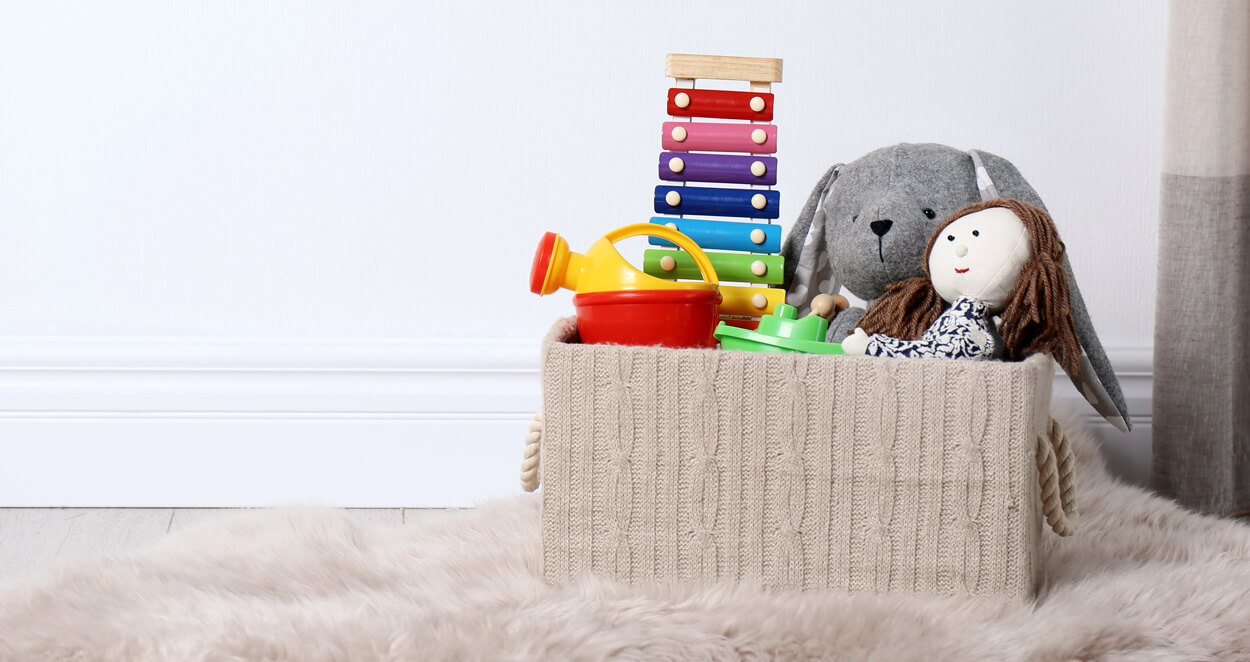Top tips for organising your child’s toys

18 May 2020
Parenthood comes with many challenges, but there is one challenge that can be particularly frustrating: when children leave their toys lying around. Any parent who has ever stepped on Lego will truly understand how painful this situation can get! And many parents struggle with this right until their little one reaches teenage years, so it might be worthwhile having a creative storage system in place right from the start…
Here are some ideas to try to get the mayhem under control:
Use small boxes instead of big boxes
Bigger isn’t always better. As simple as it sounds to throw all toys in one big box, if that one toy your toddler is looking for is at the bottom of the box, it’s all going to come out until they find it.
Instead, opt for lots of see-through, smaller boxes where you can see everything that is in each box – making even smaller toys much easier to find.
Store toys in groups and zones
Group certain toys in categories, label them if you can, and store them in or near the area where they are mostly going to be used.
For example, keep all toy cars in one box, all art and drawing supplies in one box, and all building blocks on one box – and so on.
During the day when your child changes activities, convert a space from one activity to another by packing away all the toys from the first activity before bringing out the next box of toys.
Make cleaning up fun
Try to make chores seem less like chores. Young children get bored quickly and they don’t like doing things that they don’t deem as ‘fun’ – and, of course, to them, cleaning up is not fun. You could try turn cleaning up into a game, such as having a race to see who can clean up the fastest.
Less is more
Keep an eye on any toys that don’t get played with for a long time (three to six months). Of course, getting rid of toys is a bit daunting for parents too because toys can be very expensive or even have sentimental value, but consider culling some toys and donating them to another child who will spend more time playing with them.
Keep consistent with any system that you put in place so that it becomes routine for you and your child. This makes it easier to make it a habit going forward.